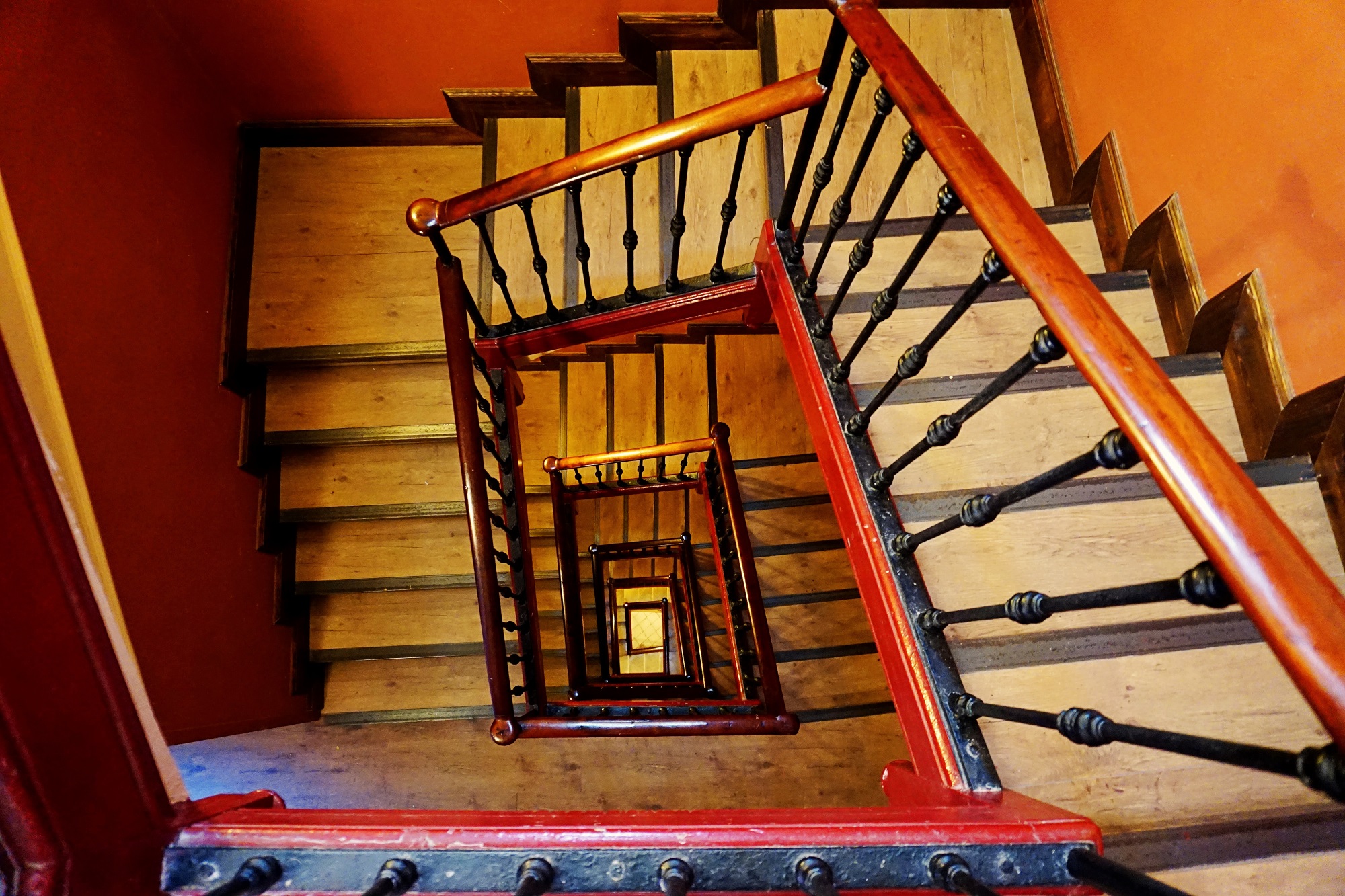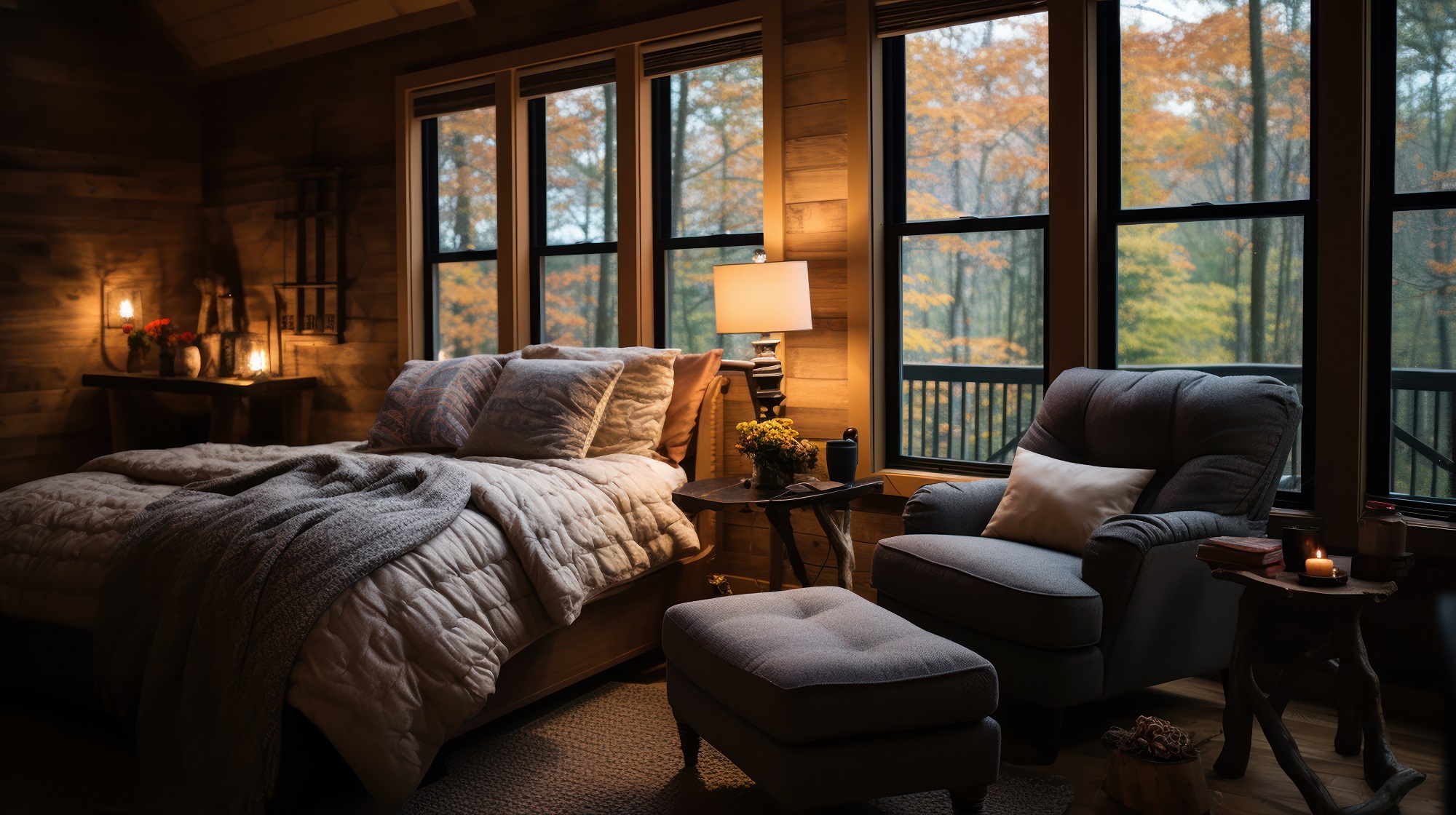Introduction
Buffalo’s unique climate presents homeowners with specific challenges when it comes to maintaining the integrity of their homes, including the often-overlooked staircase. In this blog post, we’ll explore the common stair issues faced by homeowners in Buffalo and offer practical tips on identifying and addressing these problems.
Weather-Related Damage
Issue:
Buffalo experiences harsh winters with heavy snowfall and freezing temperatures, leading to potential damage to stairs.
Buffalo’s climate, characterized by cold winters with substantial snowfall, can pose significant challenges for the structural integrity of stairs, particularly those made of wood. The combination of heavy snow, freezing temperatures, and the subsequent thawing can contribute to moisture-related issues, such as rot and warping. These problems, if left unattended, can compromise the safety and stability of the staircase.

Solution:
Regular Inspection for Moisture Damage:
- Homeowners should conduct regular inspections of their stairs, especially after periods of heavy snow or precipitation.
- Look for visible signs of moisture damage, such as discoloration, soft spots, or a musty odor.
- Pay close attention to areas where snow or rain may accumulate, such as the bottom of the staircase.
Application of Weather-Resistant Sealant:
- To protect wooden stairs from the harsh Buffalo weather, consider applying a weather-resistant sealant.
- Choose a high-quality sealant designed to repel moisture, snow, and ice.
- Ensure that the sealant is applied to all exposed surfaces, including treads, risers, and handrails.
Prompt Addressing of Cracks or Gaps:
- Act promptly to address any cracks, gaps, or openings in the staircase structure.
- Use a suitable filler or sealant to close gaps and prevent water infiltration.
- Pay special attention to joints and seams where moisture is more likely to penetrate.
By following these solutions, homeowners can mitigate the risk of weather-related damage to their stairs in Buffalo. Regular inspections and proactive maintenance are crucial for preserving the structural integrity of the staircase, ensuring it remains a safe and reliable element of the home, even in the face of the city’s challenging winter conditions.
Wear and Tear
Issue:
Everyday use can cause wear and tear on stairs, especially in high-traffic areas.
Stairs, being a frequently used part of a home, are susceptible to wear and tear over time. High-traffic areas, where people consistently ascend and descend, are particularly prone to the gradual degradation of stair components. This wear and tear can manifest in various forms, including abrasions, scuffing, and structural issues, ultimately affecting the safety and aesthetics of the staircase.
Solution:
Install Non-Slip Treads:
- To reduce the impact of foot traffic on stairs, consider installing non-slip treads.
- Non-slip treads provide an additional layer of protection to the staircase surface, minimizing the wear caused by regular use.
- They not only enhance safety by reducing the risk of slipping but also contribute to the longevity of the stair material.
Consider Adding a Protective Carpet Runner:
- Another effective solution is to add a protective carpet runner, especially in high-traffic areas.
- The runner acts as a barrier between the footsteps and the staircase, absorbing some of the impact and preventing direct wear on the stairs.
- Choose a durable and easy-to-clean material for the runner to ensure both functionality and aesthetics.
Repair Loose or Squeaky Steps Promptly:
- Regularly inspect the staircase for loose or squeaky steps, as these can indicate structural issues that, if left unaddressed, may worsen over time.
- Promptly repair any loose or squeaky steps to prevent further damage and maintain the stability of the staircase.
- Tighten screws, secure loose components, and, if necessary, reinforce weakened sections to ensure the overall integrity of the stairs.
By implementing these solutions, homeowners can proactively manage wear and tear on their stairs. These measures not only enhance the safety of the staircase but also contribute to the preservation of its aesthetic appeal and structural soundness, extending the overall lifespan of this essential element in the home.
Uneven Steps
Issue:
Freezing and thawing cycles in Buffalo can lead to ground movement, causing stairs to become uneven.
Buffalo’s climate, characterized by freezing temperatures and seasonal thawing, can result in ground movement. This movement, in turn, can lead to the shifting and settling of structures, including outdoor staircases. Uneven steps pose a significant safety concern, as they increase the risk of tripping and falling. It’s essential for homeowners to address this issue promptly to maintain a secure and stable staircase.

Solution:
Regularly Check for Uneven Steps:
- Conduct regular visual inspections of the staircase, paying close attention to each step’s alignment.
- Look for signs of unevenness, such as visible gaps, tilting, or a noticeable height difference between steps.
- Inspect the area around the staircase for indications of ground movement or settling.
Adjust the Foundation if Necessary:
- If uneven steps are detected, consider adjusting the foundation to restore the staircase’s levelness.
- This may involve adding additional support, shimming, or regrading the ground beneath the staircase.
- Ensure that the adjustments are made carefully to address the specific areas of unevenness.
Consult with a Professional for More Extensive Repairs or Adjustments:
- For cases where the unevenness is significant or involves structural issues, it’s advisable to consult with a professional.
- Structural engineers or experienced staircase repair specialists can assess the extent of the problem and recommend appropriate solutions.
- Professionals may recommend more extensive repairs or adjustments, such as reinforcing the structure or reconstructing parts of the staircase.
Addressing uneven steps promptly is crucial to prevent tripping hazards and maintain the overall safety of the staircase. While some minor adjustments may be manageable as part of routine maintenance, involving a professional becomes imperative for more complex issues. By taking proactive steps to address unevenness, homeowners can ensure the stability and safety of their stairs in the face of Buffalo’s challenging weather conditions.
Cracked or Damaged Railings
Issue:
Buffalo’s weather conditions can cause railings to weaken or crack over time.
Buffalo’s challenging weather, marked by cold winters and varying temperatures, can have a significant impact on the structural integrity of outdoor railings. Over time, exposure to snow, ice, and temperature fluctuations can lead to the development of cracks or weaknesses in the railings. Recognizing and addressing these issues is crucial to maintain both the aesthetic and functional aspects of the staircase.
Solution:
Inspect Railings for Signs of Damage:
- Conduct regular inspections of the railings, paying attention to any visible signs of damage such as cracks, splits, or rust.
- Examine connection points and joints for vulnerabilities.
- Inspect the entire length of the railing, including handrails and balusters.
Repair or Replace as Needed:
- If damage is identified, take prompt action to repair or replace the affected sections of the railing.
- For minor cracks or surface damage, use appropriate fillers or sealants to prevent further deterioration.
- If the damage is extensive or compromises the structural integrity of the railing, consider a complete replacement.
Consider Upgrading to Weather-Resistant Materials:
- Enhance the long-term durability of railings by considering an upgrade to weather-resistant materials.
- Materials such as stainless steel, aluminum, or pressure-treated wood are known for their ability to withstand Buffalo’s harsh weather conditions.
- Consult with professionals to choose the most suitable material based on the specific requirements and aesthetic preferences.
Ensure that Railings Meet Safety Standards:
- Regularly check that railings comply with safety standards and local building codes.
- Confirm that the height, spacing, and overall design of the railings meet safety regulations.
- If upgrading or replacing railings, choose designs that not only enhance aesthetics but also prioritize safety.
By following these solutions, homeowners can address the impact of Buffalo’s weather on railings. Regular inspections, timely repairs, and strategic upgrades contribute to the resilience and longevity of the railing system, ensuring it remains both visually appealing and safe for use.
Pest Infestations
Issue:
Buffalo’s climate can attract pests, leading to potential damage to wooden stairs.
The climate in Buffalo, characterized by cold winters and varying temperatures, can create conditions conducive to pest infestations. Wooden stairs, in particular, are susceptible to damage from wood-boring insects and other pests. Recognizing and addressing pest infestations promptly is crucial to preserving the structural integrity of the stairs.
Solution:
Regularly Inspect for Signs of Pest Infestations:
- Conduct regular inspections of wooden stairs to identify early signs of pest infestations.
- Look for evidence such as small holes, sawdust-like material (frass), or the presence of live insects.
- Pay attention to hidden or less visible areas where pests may thrive.
Treat Wooden Stairs with Appropriate Insect-Repellent Products:
- Apply insect-repellent products specifically designed for wooden structures to deter pests.
- Choose treatments that are safe for outdoor use and provide long-lasting protection.
- Follow the manufacturer’s guidelines for application and reapplication to ensure effectiveness.
Consider Professional Pest Control Services for Severe Infestations:
- If signs of pest infestation are severe or widespread, consider seeking professional pest control services.
- Pest control experts can assess the extent of the infestation, identify the type of pests involved, and recommend targeted treatments.
- Professional services may include the application of stronger insecticides or fumigation, depending on the severity of the infestation.
Implement Preventive Measures:
- Take proactive measures to prevent pest infestations by keeping the surrounding area clean and free of debris.
- Store firewood and other wooden materials away from the stairs to reduce the attractiveness of the area to pests.
- Consider applying protective coatings or finishes to wooden stairs that can act as a barrier against pests.
By implementing these solutions, homeowners can protect their wooden stairs from pest infestations common in Buffalo’s climate. Regular inspections, preventive measures, and appropriate treatments contribute to the longevity and resilience of the stairs, ensuring they remain free from pest-related damage.
Conclusion
Proactively addressing common stair issues in Buffalo homes is essential for maintaining the safety and longevity of your staircase. Regular inspections and timely repairs can prevent minor problems from escalating into major repairs. Whether it’s protecting against weather-related damage or addressing wear and tear, taking these steps will help ensure your stairs remain a functional and secure part of your home in Buffalo’s ever-changing climate.





